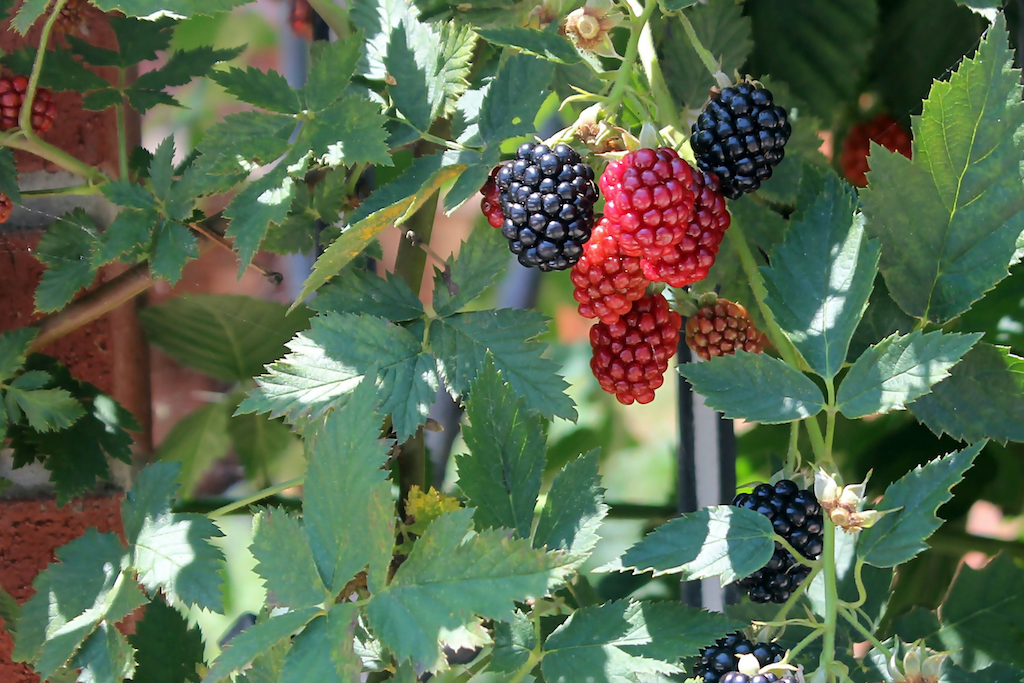This post may contain affiliate links. Please read my disclosure for details at the bottom of this page. As an Amazon Associate, I earn from qualifying purchases on this article about bokbunja in Korean cuisine. I hope you enjoy learning about bokbunja, otherwise known as the Korean blackberry, Korean black raspberry, or Korean bramble!
What Is Bokbunja?
The Korean ‘bokbunja’ (복분자), scientifically known as Rubus coreanus, is a species of raspberry native to Korea, Japan, and China. In English, people refer to this berry as the Korean blackberry, Korean bramble, or Korean black raspberry.
These fruits are usually harvested between May and July and can only be cultivated in a few specific areas of the Korean peninsula.
While this species of black raspberry (Rubus coreanus) is native to Korea, it is much rarer than the imported (and now commonly cultivated) North American black raspberry (Rubus occidentalis). Unlike the native Korean black raspberry that can only grow in specific areas of Korea, the North American variety can grow widely across the country. As a result, many traditional products sold on the Korean market now use the North American raspberry because it is a cheaper and more abundantly available ingredient.
Bokbunja in Korean Cuisine:
Once again, people in Korea refer to this specialty berry as ‘bokbunja’ (복분자).
Most commonly, people in Korea use this fruit to make ‘bokbunja-ju’ (복분자주): In English, we can translate this to ‘Korean black raspberry wine.’
While people traditionally made this wine using the Korean species Bokbunja (Rubus coreanus), companies now more commonly use the North American black raspberry (Rubus occidentalis) because of its availability and cost. I briefly touched upon this in the previous section.
Other common Korean black raspberry (or Korean blackberry) products include Korean blackberry extract or vinegar.
Korean Blackberry Frequently Asked Questions:
Now that we learned about this Korean berry fruit, I want to answer some questions you may have about it as well! If I do not answer your question, feel free to leave a comment in the section below or email me at [email protected].
What Does Korean Black Raspberry (Korean Blackberry) Taste Like?
The Korean black raspberry tastes sweet and slightly sour when fully ripe. As It grows, this berry has a reddish hue before it blackens when ripe.
Where Can I Buy This Ingredient?
Unfortunately, you will not find this ingredient in your typical (western) grocery store. You may sometimes find this fruit (though this is incredibly rare and unlikely) at your local Korean or Asian grocery store between May and July. These berries can only be cultivated in specific areas, even on the Korean peninsula, so they can be difficult to find.
If you cannot find this fruit, do not fret! You can still try them if you visit South Korea! Or, you can try products made from this delicious berry (such as bokbunja wine!)
How Do I Properly Store Bokbunja?
Like other berries, I recommend storing Korean blackberries (or Korean black raspberries) in the refrigerator.
What Is a Good Bokbunja Substitute?
If you cannot find Korean bokbunja, I recommend just eating or cooking with blackberries or American black raspberries instead. While they do not taste the same, they are similar!
I Hope You Enjoyed Learning About Bokbunja (Korean Blackberry)!
In the end, I hope you enjoyed learning about the uses of bokbunja in Korean cuisine. If so, let me know in the comment section!
If you would like to read more about cooking, you can find recipes as well as further Korean ingredient articles on my blog. I listed some of our favorite Carving A Journey recipes below! For reference, many recipes are influenced by my family’s blended Korean and Southern heritage.
Korean Ingredient Articles:
Further Carving A Journey Recipes:
If you have any questions or comments, you can also email me at [email protected].
And, finally, I would love to hear from you through our social media as well! You can follow me at @carvingajourney on Instagram, Facebook, and Pinterest. I also started a vlog Youtube channel with my husband! Or, if you would like more articles like these, you can subscribe to the blog by joining the mailing list. Let me know if you try eating bokbunja (Korean blackberry)! Thank you so much for stopping by!
Carving A Journey is a participant in the Amazon Services LLC Associates Program, an affiliate advertising program designed to provide a means for sites to earn advertising fees by advertising and linking to Amazon.com. Although we may earn commissions for our endorsement, recommendation, testimonial, and/or link to any products or services from this website, these opinions are my own and I fully support these products.

